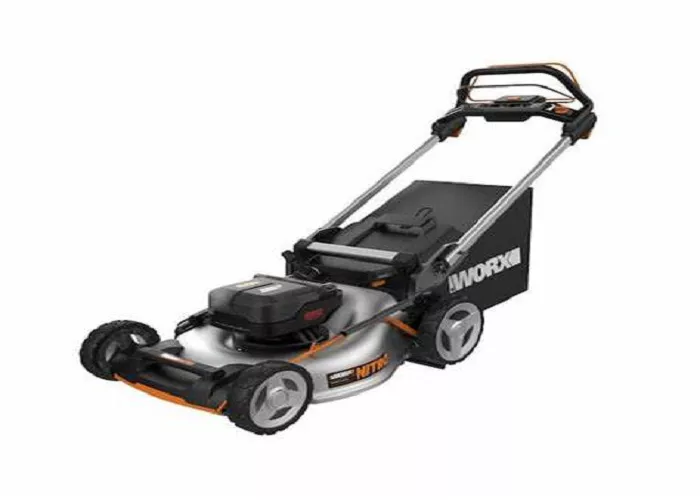Lawn mowers are essential tools for maintaining a healthy and aesthetically pleasing lawn. One of the most critical factors affecting their performance is RPM (Revolutions Per Minute), which measures how fast the engine and blade rotate. Understanding RPM is crucial for selecting the right mower, ensuring optimal cutting efficiency, and prolonging equipment life.
What RPM Means for Lawn Mowers
Cutting Speed: Higher RPM means faster blade rotation, leading to cleaner cuts.
Engine Power: RPM is directly linked to engine performance and torque.
Fuel Efficiency: Running at the correct RPM ensures optimal fuel consumption.
Noise and Vibration: Excessively high or low RPM can increase noise and wear.
Typical RPM Ranges for Different Mower Types
Gas-Powered Push Mowers
Engine RPM
2,800 – 3,600 RPM
Blade RPM
2,000 – 3,000 RPM (due to gear reduction)
Why This Range?
- Enough power for residential lawns.
- Balances cutting efficiency with fuel economy.
Riding Lawn Mowers
Engine RPM
2,400 – 3,200 RPM (under load)
Blade RPM
1,800 – 2,800 RPM
Why This Range?
- Larger cutting decks require consistent torque.
- Lower RPM helps reduce vibration and wear.
Zero-Turn Mowers (Commercial Grade)
Engine RPM
3,000 – 3,600 RPM
Blade RPM
2,500 – 3,200 RPM
Why This Range?
- Designed for speed and precision in large areas.
- High blade RPM ensures clean cuts at faster speeds.
Factors Affecting RPM Performance
Engine/Motor Condition
- A well-maintained engine runs at consistent RPM.
- Dirty air filters, old spark plugs, or fuel issues can cause RPM drops.
Blade Sharpness & Balance
- Dull blades increase resistance, forcing the engine to work harder.
- Unbalanced blades cause vibrations, leading to RPM fluctuations.
Grass Type & Thickness
- Thick, wet grass requires higher torque, potentially lowering RPM.
- Dry, thin grass allows the mower to maintain optimal RPM.
Throttle & Governor Settings
- The throttle controls engine speed (RPM).
- The governor regulates RPM under load to prevent stalling.
Belt & Pulley Systems
- Worn belts slip, reducing blade RPM.
- Incorrect pulley sizes alter the speed ratio between engine and blade.
How RPM Impacts Cutting Quality
| RPM Issue | Effect on Cutting Quality |
|---|---|
| Too High RPM | Excessive noise & vibration Grass may appear scalped Increased fuel consumption |
| Too Low RPM | Uneven, ragged cuts Grass tearing instead of slicing Engine bogging down |
| Optimal RPM | Clean, precise cuts Efficient mulching Reduced strain on engine |
Maintaining Proper RPM for Longevity
Regular Engine Maintenance
- Change oil every 50 hours (or per manufacturer’s recommendation).
- Clean/replace air filters to ensure proper airflow.
- Check spark plugs for wear.
Blade Care
- Sharpen blades every 20-25 hours of use.
- Balance blades after sharpening to prevent vibration.
Governor Adjustment (If Needed)
- If RPM drops under load, the governor may need recalibration.
- Consult the mower’s manual for adjustment procedures.
Common RPM-Related Issues & Solutions
| Problem | Possible Cause | Solution |
|---|---|---|
| Engine Surging (RPM Fluctuates) | Dirty carburetor, clogged fuel filter | Clean carburetor, replace fuel filter |
| Low RPM Under Load | Worn belts, dull blade, governor issue | Replace belts, sharpen blade, adjust governor |
| Excessive Vibration | Unbalanced blade, bent crankshaft | Balance or replace blade, inspect crankshaft |
| High RPM (Overrevving) | Governor malfunction, throttle stuck | Check governor linkage, adjust throttle |
Conclusion
Understanding lawn mower RPM is essential for achieving professional-quality cuts and extending equipment life. Different mowers operate at varying RPM ranges, and maintaining optimal speed depends on engine health, blade condition, and proper adjustments.For best results, always refer to your mower’s manual and perform regular maintenance. A well-tuned mower running at the correct RPM will ensure a healthier lawn and a longer-lasting machine.

